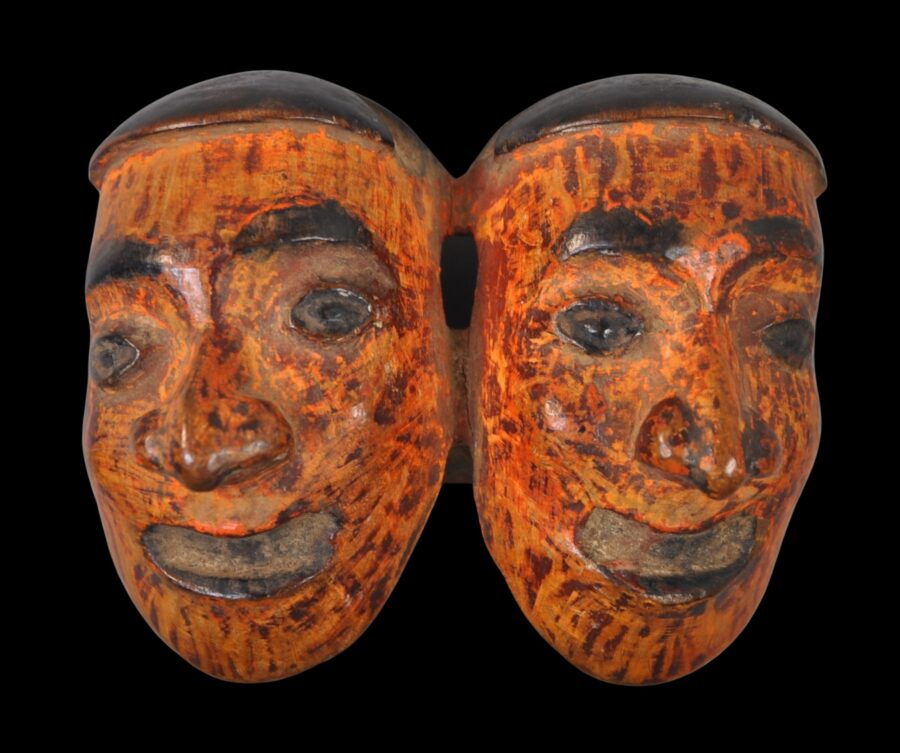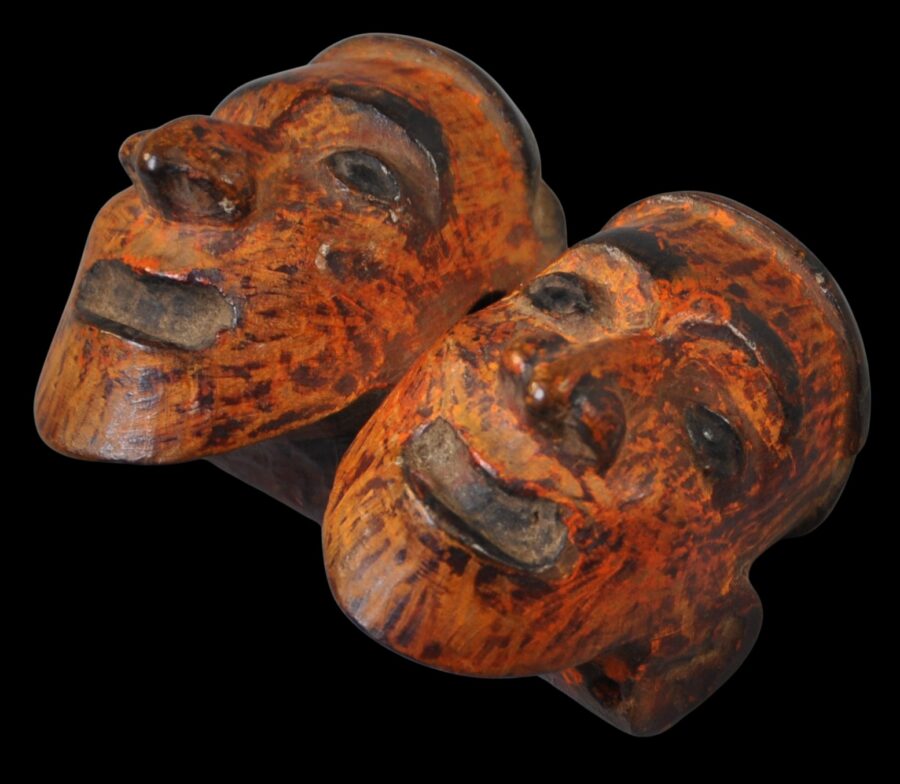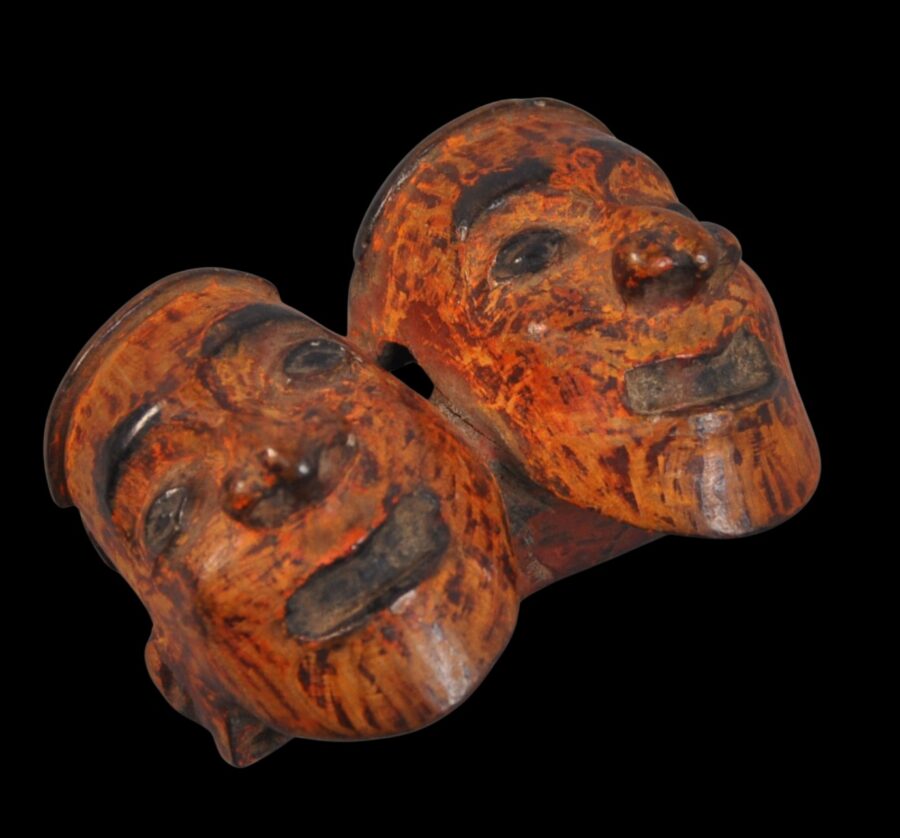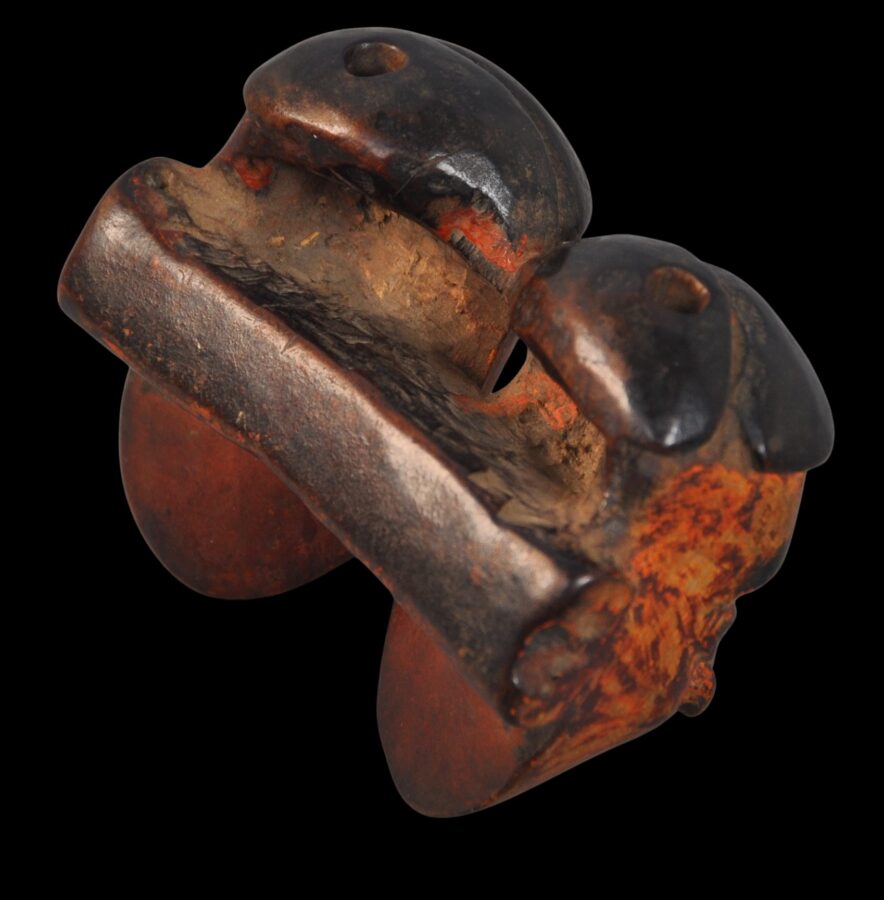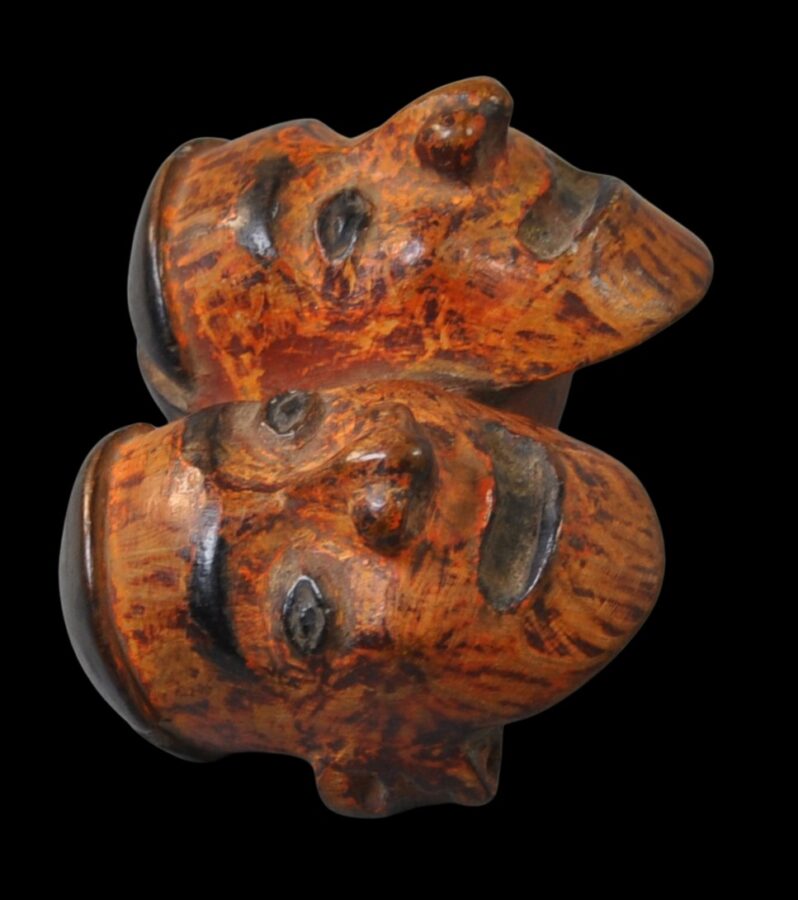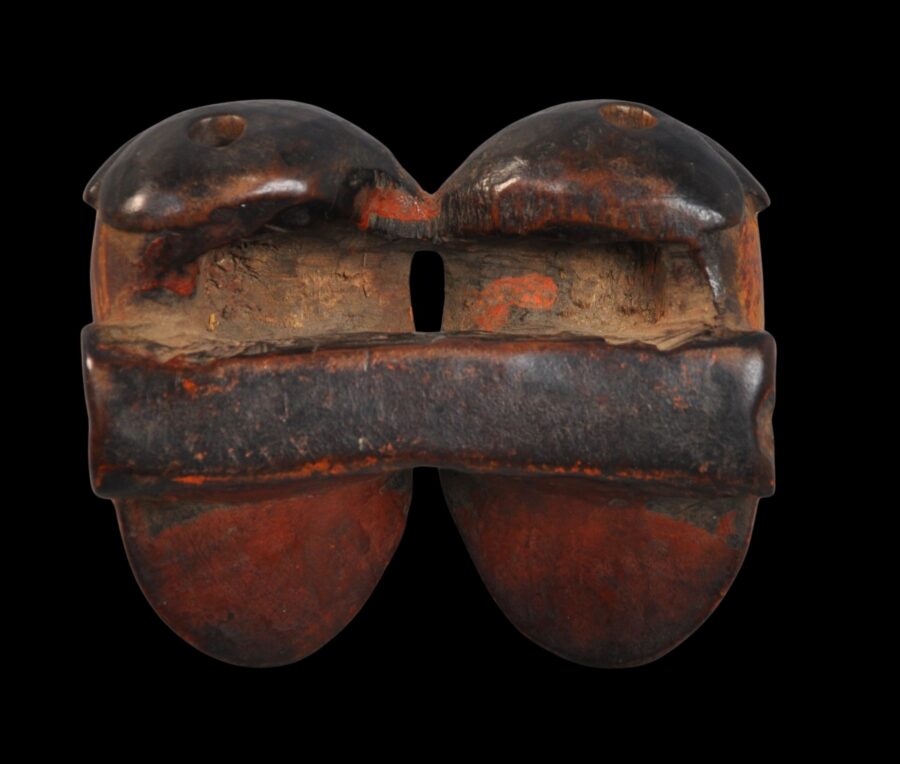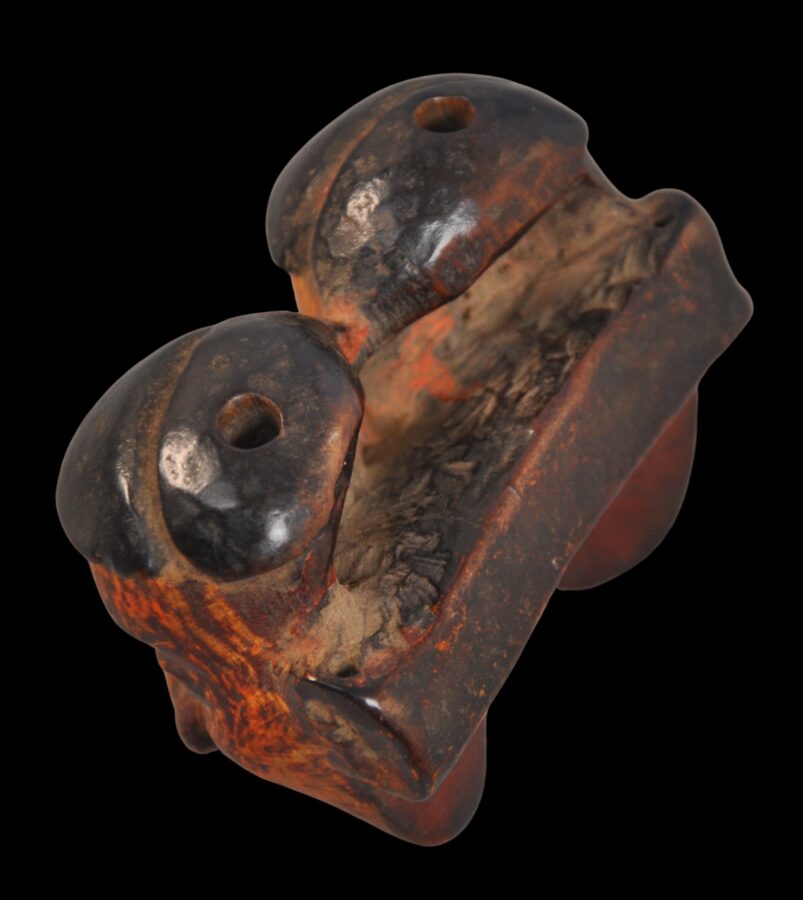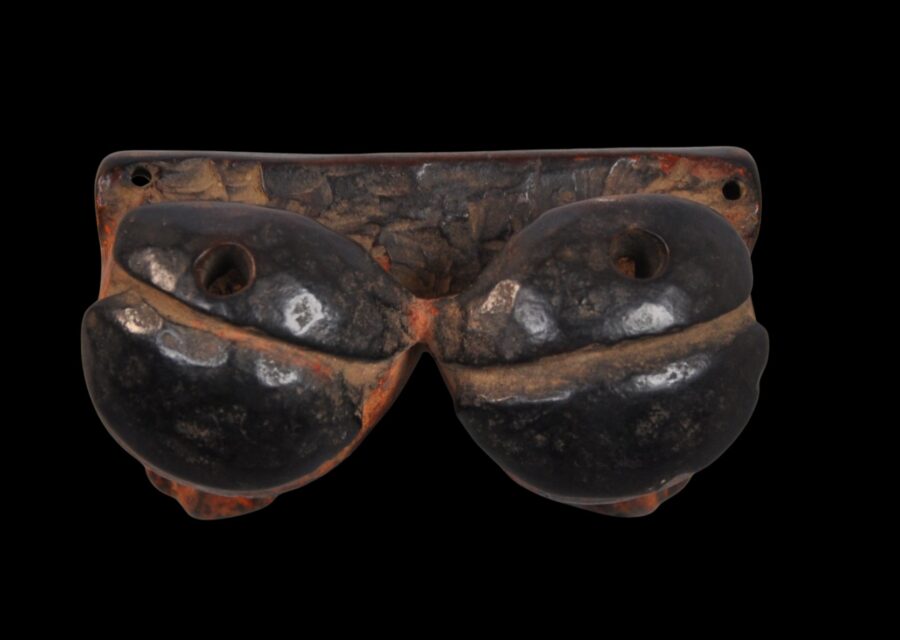This well-carved Naga wooden ornament of two heads, produced from a single piece of wood, was intended as a warrior’s chest ornament or was attached to a head-taker’s woven cane basket as an ornament and a status symbol. It is decorated with brown and orange polychrome.
Ornaments of this type with representations of severed human heads traditionally were reserved for warriors who had successfully taken heads. This ornament suggests that its original owner had taken at least two heads.
It is three-dimensional in the manner of its carving and the reverse has been carved with loops to allow the ornament to be worn from a chain or attached to a basket.
The front and back have clear age and patina and the back particularly shows ample wear from having been used.
The Naga people are concentrated in Eastern India. Smaller numbers are also in western Burma. The Naga themselves are divided into at least 15 major ethnic subgroups: the Angami, Ao, Chakhesang, Chang, Khiamniungan, Konyak, Lotha, Phom, Pochury, Rengma, Sangtam, Sümi, Tikhir, Yimkhiung, and the Zeme-Liangmai (Zeliang). They speak as many as 30 sometimes mutually unintelligible dialects. Traditionally, they were animists. Each group had their own ceremonial attire.
The area in India where the Nagas, who are believed to be of Mongolian descent, are concentrated was recognised as its own state, Nagaland, in 1977. It is a relatively remote, mountainous and landlocked region, but it was not remote from trade. The Nagas largely were farmers but general trade also was another economic activity, one in which both women and men participated. Costume and ornament making were a significant commercial activity. Some Naga tribes made no ornaments at all but instead bought them from other tribes.
The Naga appreciated imported glass beads and seashell components greatly for their jewellery and other adornment. Typically, the seashells were traded in from the Bay of Bengal. The beads came from India, and also much further afield such as Venice. Metal elements were also used. These were cast locally or imported, mostly from India. The Nagas traditionally were head hunters, and the jewellery of the menfolk reflected the preoccupation with ancestor worship and one’s prowess at hunting and taking heads.
Jewellery items were highly prized and were treated as heirlooms to be passed from family member to family member. Components of necklaces such as individual beads were prized just as much as overall jewellery pieces, and so often beads and other jewellery components would be used and re-used. Jewellery items would be amended and remade according to need and as a family’s wealth and prestige grew. But by the 1970s, the Nagas no longer wore much traditional jewellery and jewellery making for traditional purposes largely stopped. Most Nagas had also converted to Christianity (Baptist mostly), and the taking of heads had long stopped, having been largely supressed by the British in the early 20th century. As with any evolving society, heirloom pieces were traded for items that improved a family’s well-being – medicines, household appliances and so on.
The head ornament here is from the collection of well known artist, printer and art publisher Hansjorg Mayer (b. 1943) who built up a large collection of Naga jewellery over a 50-year period, commencing in the early 1970s. Mayer’s works are to be found in the Tate Britain and other museums in Europe. Much of his collection was illustrated in the seminal book on the topic: Jacobs, J., The Nagas: Hill Peoples of Northeast India, Thames & Hudson, 1990. The piece here is illustrated on page 192.
It is in excellent condition, and as mentioned, has a superb patina.
References
Ao, A. S., Naga Tribal Adornment: Signatures of Status and Self, The Bead Society of Greater Washington, 2003.
Barbier, J.P., Art of Nagaland: The Barbier-Muller Collection Geneva, Los Angeles County Museum of Art, 1984.
Giehmann, M., Naga Treasures: Tribal Adornment from the Nagas – India and Myanmar, 2001.
Jacobs, J., The Nagas: Hill Peoples of Northeast India, Thames & Hudson, 1990.
Saul, J.D., The Naga of Burma: Their Festivals, Customs and Way of Life, Orchid Press, 2005.
Sherr Dubin, L., The Worldwide History of Beads, Thames & Hudson, 2009.
Shilu, A., Naga Tribal Adornment: Signatures of Status and Self, The Bead Museum, Washington, 2003.
Untracht, O., Traditional Jewelry of India, Thames & Hudson, 1997.


